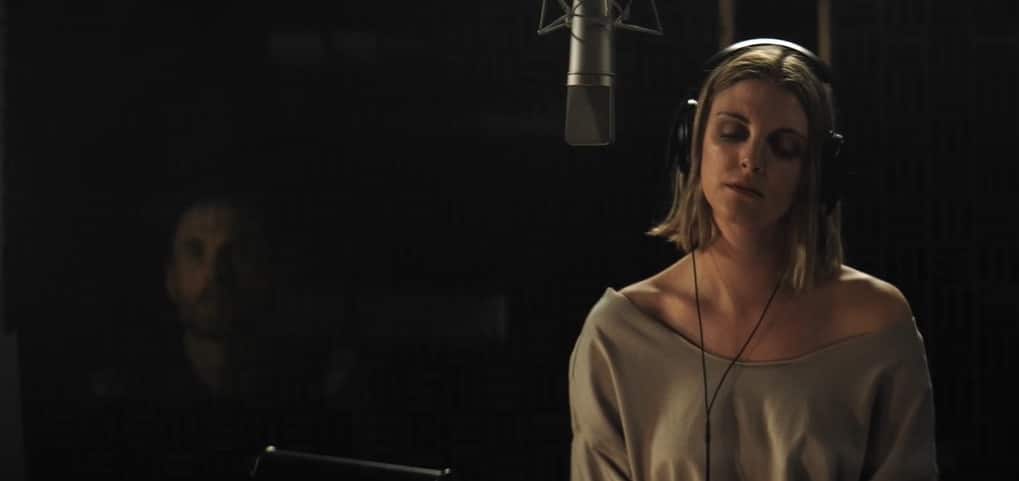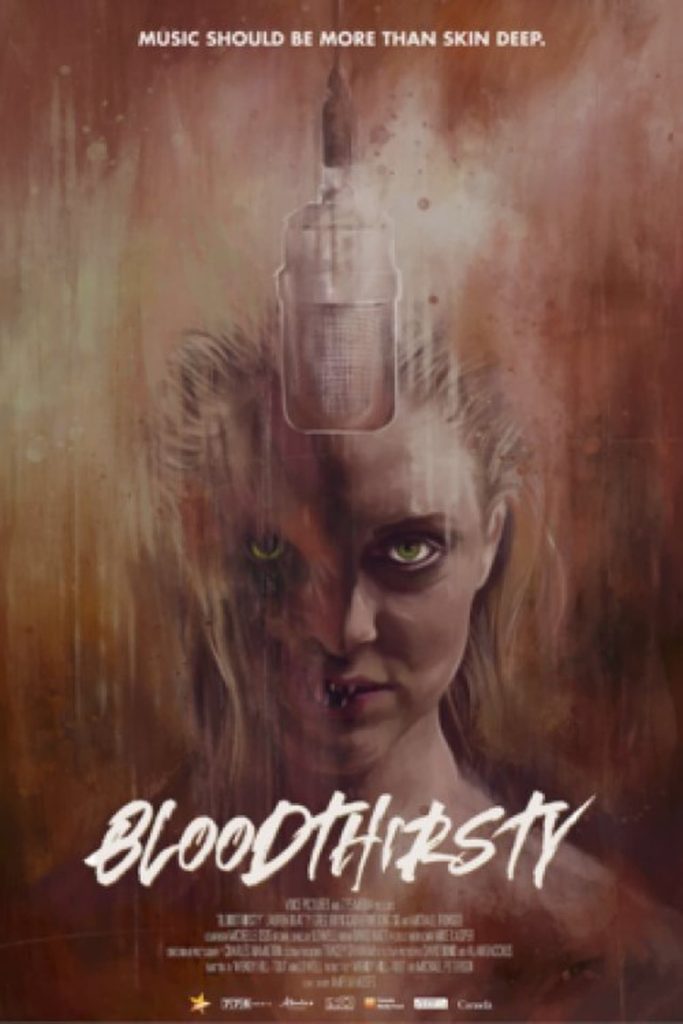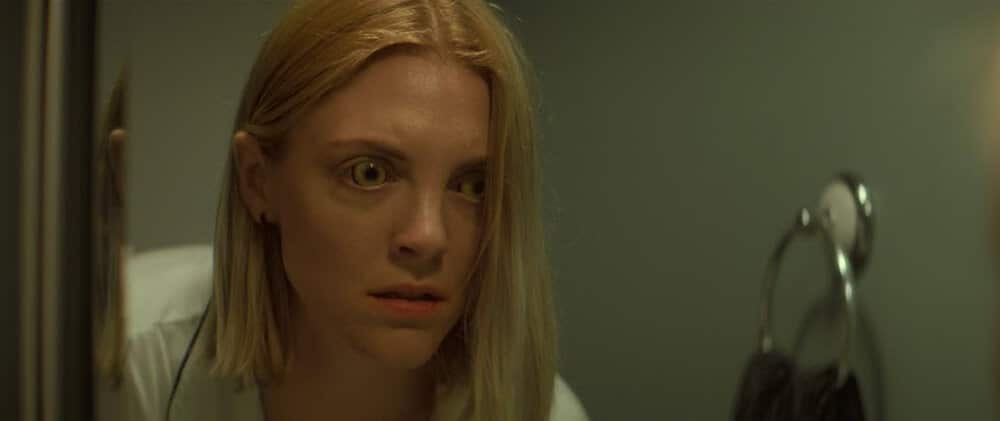
Amelia Moses’s work ethic is certainly to be admired. I’ve not long since reviewed her feature Bleed With Me, and yet it seems that she’s released a second feature this year – Bloodthirsty, another worthwhile film which doesn’t quite match Bleed With Me in terms of warped interpersonal dynamics, but still has much to recommend it. True to the film’s title, we commence with a bloody scene where musician and songwriter Grey (Lauren Beatty) licks blood and gore from her hands; okay, it’s a dream, but it seems she’s been suffering from these kinds of dreams for a while, seeking medical intervention to hold her dreams and hallucinations at bay. In the midst of all this, she’s on the verge of recording her second album and panic-stricken that it isn’t going to be a hit. Luckily for her, she gets contacted by the legendary – or should that be notorious – producer Vaughn (Greg Bryk), who wants to work with her. She’s willing to overlook rumours of his involvement in the death of a singer-songwriter back in the Nineties in order to make a great record. Alongside her partner Charlie (Katharine King So) she heads out into the boonies to find his home and studio.
Vaughn’s first concern is to get Grey past her writer’s block, something which she is really struggling with. He has some unorthodox methods, and he insists that she ditches the pills – using her state of mind, rather than fighting against it. This quickly brings Vaughn and Charlie into opposition, as she’s seriously concerned about how the creative process is impacting upon Grey, but Vaughn is at least helping progress occur. He and Grey develop a working relationship of sorts, underpinned on both sides by revelations of past traumas, but key to all of this is Vaughn’s revelation that he knows there’s a hidden, primal side to her that she needs to learn how to use. Under his influence, Grey begins to change, her visions growing ever more visceral.

Bloodthirsty is another phenomenally-attractive film, with clever use of colour and light throughout. Often using a muted colour palette, with lots of warm light and firelight, glimpses of bright reds take on a symbolic significance, though without this being overpowering or overplayed. The music itself plays a big part in the film, which won’t be for everyone of course, but of its kind – soulful female solo singing, a little like Fiona Apple’s kind of style – it’s pretty good. Perhaps it’s too soon to spot themes in Moses’s work, but there are some similarities to Bleed With Me that I can see: the use of dreams, the wintry wilderness setting, the damaging menage-a-trois and the very sparing use of blood. Although the film opens with a hallucinatory and bloody sequence, there is not much gore here: a little goes a very long way. (Small, fluffy mammals don’t come off so well here, either.)
By and large, Bloodthirsty offers a slick and subtle take on a classic horror theme, bringing its own ideas and own style to bear upon it. The impact of ambition, and the voraciousness of the creative process are given a fantastical examination here: at first, the unwitting neophyte who arrives in a remote house presided over by a mysterious stranger, who first wrote to the visitor, resembles the Dracula story, but it is never straightforward after this point, disrupting both the ‘hapless victim’ and the ‘muse’ ideas. The film is at its absolute best when downplaying (or avoiding) SFX; I’d take even less than the film uses quite happily, as it’s when it begins to show more that it suffers its only weak moments and begins to head down the same trammels as many other pre-existing films, whereas outside of these scenes, it really does feel like a fresh take on the mythos. But overall, Bloodthirsty does its own thing in its own way, with Amelia Moses again showing herself to be one to watch. Bloodthirsty is an aesthetically- and tonally-pleasing horror film with many worthwhile aspects, and there’s much to admire here.
Bloodthirsty (2020) will screen as part of the Blood in the Snow Horror Festival.
